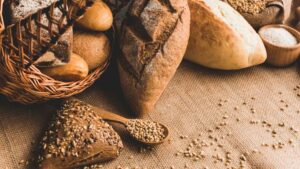Introduction
Millets, once considered “poor man’s food,” are becoming increasingly popular as superfoods due to their nutritional benefits and socio-economic and environmental benefits. This blog article explores the entire value chain of millets, from production to consumption, providing insights for experts, decision-makers, and interested parties. The goal is to uncover the history of these ancient grains and provide insight into the food processing industry, highlighting the fascinating prospects in the industry.
Cultivation Phase
Millets are hardy plants that thrive in various agroclimatic conditions. They can be optimized through modern agricultural techniques like precision farming and organic farming, as well as traditional methods like intercropping. Government initiatives like the National Food Security Mission and 2023’s International Year of Millets require policy support to encourage millet production. Millets can grow in high altitude locations in Asia and desert landscapes in Africa, making them suitable for various agroclimatic situations.
Farmers use both conventional and contemporary agricultural techniques to cultivate millets, which are crucial for their success. Conventional methods, such as intercropping, improve soil fertility and natural pest control. Modern techniques, such as precision farming, organic farming, and effective irrigation systems, aim to maximize millet yield, resulting in higher-quality crops and higher yields. Both methods are essential for successful millet cultivation.
Harvesting and Post-Harvest Processing
The millet value chain requires efficient harvesting and post-harvest processing techniques. Current mechanised procedures like hand threshing should be replaced for low grain loss and quality preservation, while value addition processes like packing, milling, and polishing should be improved.
Millets are harvested when they reach maturity, and post-harvest processing facilities are used to ensure minimal grain loss and maintain their quality. Post-harvest processing includes threshing and cleaning to remove contaminants and foreign objects. Mechanized processes are used in modern units, while traditional methods may involve laborious threshing. Value addition includes polishing, grinding, and packaging to create a sanitized, homogeneous product for distribution, increasing millets’ marketability. These steps are essential for preserving millets’ quality and efficiency.
Distribution and Marketing
The distribution and marketing of millets from farms to customers are crucial, with integration into retail stores, supermarkets, local markets, and farmer cooperatives being essential components of the value chain, benefiting both farmers and consumers.
The millet value chain plays a crucial role in distributing and marketing nutrient-dense grains from producers to customers. The process involves local markets and farmer cooperatives, which promote regional economies and community. Additionally, retail and supermarkets are becoming more accessible due to rising demand for millets, making them more accessible to consumers and encouraging their inclusion into mainstream diets. These channels facilitate the direct connection between farmers and customers, promoting regional economies and a sense of community.
Consumption and Culinary Exploration
The study of millets in the kitchen is crucial due to their historical background and adaptability to both traditional and contemporary cuisine. Traditional millet-based dishes like Ragi chapati and Bajra Khichdi are popular, while a growing trend in modern cooking incorporates millet into bread, pasta, and desserts to cater to a wider audience.
Millets have a rich culinary history and can be used in various recipes, making them a staple in many regions. They are used in traditional dishes like Bajra Khichdi, and Sorghum Roti, showcasing their versatility and mineral content. In recent years, millets have gained popularity in modern cuisine, with home cooks and chefs experimenting with them in various dishes like bread, pasta, and desserts. This renaissance in millets’ use in cuisine diversifies diets and incorporates them into modern cuisine culture.
Health and Environmental Impact
The main concerns are millets’ nutritional content and environmental sustainability, as they are gluten-free, high in fibre, vitamins, and minerals, and suitable for restricted diets. They are also sustainable, requiring minimal water and improving soil health and biodiversity.
Understanding millets’ value chain is crucial for recognizing their health benefits and environmental impact. Millets are gluten-free, high in fiber, vitamins, and minerals, suitable for those with dietary restrictions. They promote overall wellbeing and are environmentally sustainable due to their low water requirements and resistance to pests and diseases. Additionally, millets support biodiversity and soil health, making them a sustainable farming option.

